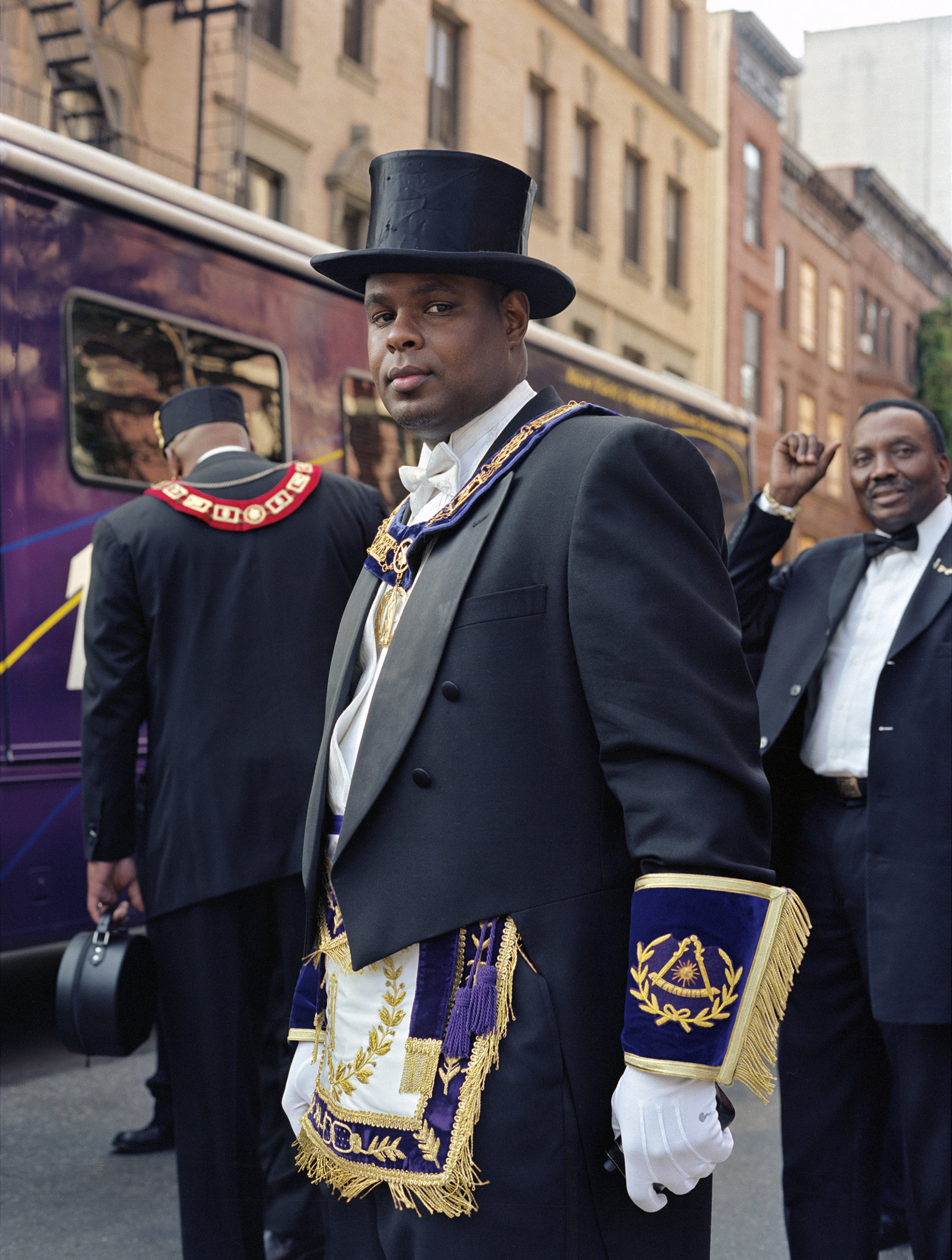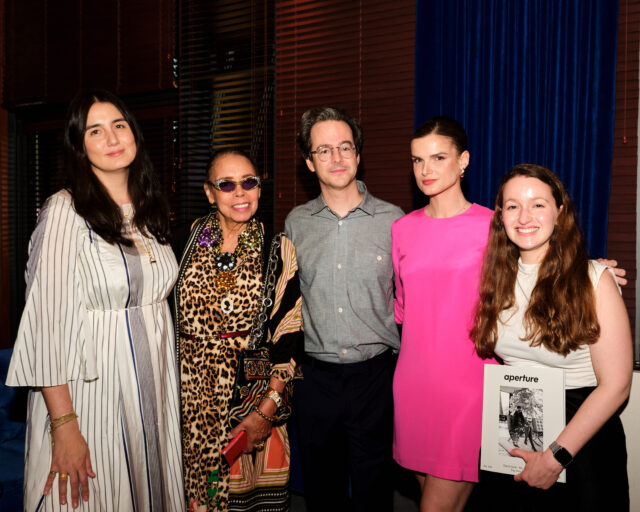Jamel Shabazz, Grand Master, Harlem, New York, 2010. Courtesy the artist
“Well before there was Kehinde Wiley, there was Jamel Shabazz and his New York street portraiture of subjects framed by regalia of their own making,” Khalil Gibran Muhammad writes of the legendary street photographer in Aperture’s “Vision & Justice” issue. “His lens has always seen more joy, more life, more blackness than our own eyes are capable of.” Renowned for capturing the styles and poses of New York in the early 1980s, Shabazz’s photographs, collected in Back in the Days (2001), A Time Before Crack (2005), and several other recent books and exhibitions, are indelible records of African American life, as rich with humanity as the portraits of James VanDerZee and Gordon Parks. Here, Shabazz speaks with the image activist, CNN commentator, and former fashion and beauty editor for Essence magazine, Michaela Angela Davis, about the origins of his photography and the impulse to record African American communities, from the dawn of hip-hop to today.

Michaela Angela Davis: When did you first start taking pictures?
Jamel Shabazz: I started taking pictures in 1975. My first subjects were primarily close friends and fellow junior high school classmates. Prior to that, as a young child, given that my father was a photographer, I was always surrounded by images, and I saw the beauty of photography.
Davis: You say you saw the beauty of photography. When did you discover the beauty of black people? When I pore over your images, I find they all are like love letters to us, to black people, to black youth. Can you remember learning or knowing that you loved these people, or that you loved us?
Shabazz: Oh, no doubt about that! My discovery came by way of viewing the countless family photo albums we had prominently displayed in our home. I was in my single digits at the time, but I saw beautiful black and white photographs of my immediate family in pages of well-organized albums, many going back into the early 1900s. There were images of love, struggle, and dignity and it was within the pages of these albums that my love for my people was born.
Around this same time, my father had this very unique book, Black in White America (1968) by Leonard Freed, which would become a fixture on our coffee table. That one book provided me with a broader view of black people outside of my local community. I not only saw intriguing images of black people, but I also got the chance to read many stories of injustice and fortitude. Black in White America was instrumental in helping me better understand the climate of America at the time, as the civil rights movement was on the rise in the midst of racial and social unrest. I can honestly say that Freed’s book changed my life, inspired my vision and love for my people. It also helped me to better understand my higher calling in life, which is to continue to document our history and culture in hopes that young people can draw inspiration from my work.
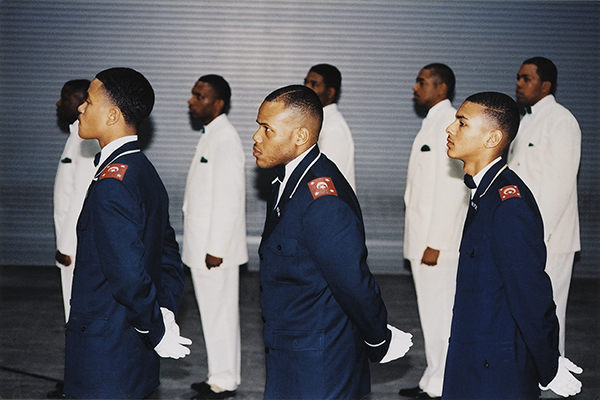
Davis: There’s a very particular sensibility that you had in looking at black youth at the time, in the 1970s and ’80s. I feel like you were doing, you know, Black Lives Matter through photography in a time when we didn’t even have that language. You were looking at the people that no one else was looking at, and photographing them in a way that had dignity and importance, and assuming that someday this would matter. Was that your goal? Can you remember what your initial hunger was to take photographs of the people in your high school or in your neighborhood?
Shabazz: My main goal for making images during my high school years was just to have a greater sense of purpose. At the time, many of my friends were up and coming graffiti artists and were making names for themselves in the neighborhood and outer boroughs. I did partake in that particular art form, but I found photography more direct and personal. Photography allowed me an opportunity to engage and interact with folks that were often deemed invisible or irrelevant.
I discovered my real hunger for making images while I was stationed in West Germany in the late 1970s. It was there that I realized how impactful photographs are, on me directly. To military personnel stationed overseas, letters and photographs are vital to one’s wellbeing, especially as we had to contend with a lot of hardships and thoughts of being away from home. Photographs I brought over with me that I had made just a couple of years earlier, of my junior and senior high school friends, provoked good memories and helped me maintain my sanity in an environment that did not have a lot of people of color. In Germany, I promised myself that when I returned home I would carry my camera everywhere I go, so I would never be without memories.
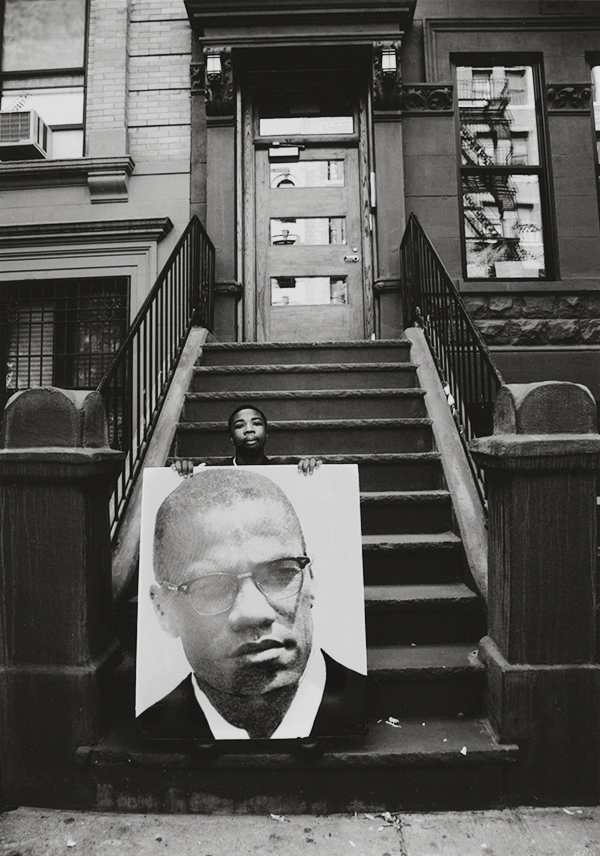
Davis: What were those images that kept you sane?
Shabazz: They were mostly pictures of family, junior and senior high school friends, and of course my girlfriends. In the States, the photos were important, but when I went overseas they took on a whole new form. I was not only looking at the individuals in the photographs, but every aspect of the photos, from various styles to the environments in which they were made. When I would go out in the field on exercises, I would actually bring my small portfolios of 4-by-6 inch prints to help suppress the homesickness that I would feel from being away. Those few images allowed me to see the magical power of photographs and having memories.
Upon returning home, during the summer of 1980, my camera became the compass and the magnet that allowed me to both connect and reconnect with a lot of young people. During the fall of that year, I returned to my high school now more idealistic, mature, and concerned with the wellbeing of the younger generation and the mounting tension that was so present in both the school and local community. I realized that I had to lend my voice, and talk about the idea of “nation time” and nation building. This would be a challenge. Guns and drugs were gaining a strong presence and a number of young men were being led astray. I started talking to the youth at every opportunity. One of my main statements was “I see your greatness, young brother. I’m a photographer, and would you mind me capturing your legacy?” That was a practice that broke down many barriers and created a way in. Once they agreed, I would train my lens on them while composing the frame; I would speak to them about the need to love one another, and to be mindful of the pitfalls and obstacles that they could face, and I often used my own life as an example.
Davis: You said that? You would literally say, “I see your greatness, my young brother, and I would be honored to let me capture your legacy.”
Shabazz: Yes, for the most part those were my words. It was always about recognizing the greatness, the warrior spirits, and the beauty within. I realized that I had a voice, not only to capture the image, but more importantly to plant the seed of positivity in their minds. What I wanted to do was allow these brothers and sisters to know that I see you for who you are. I used the word “warrior spirit” with many of the young men coming up because they were the ones that were often challenged and searching to be recognized, and I noticed that particular reference made the brother feel good. It made him feel visible. But what was more important for me was to engage young people to help eradicate some of the violence that was going on. I also realized that I had the ability as a mediator to actually go amongst them and end a lot of tension between warring factions.
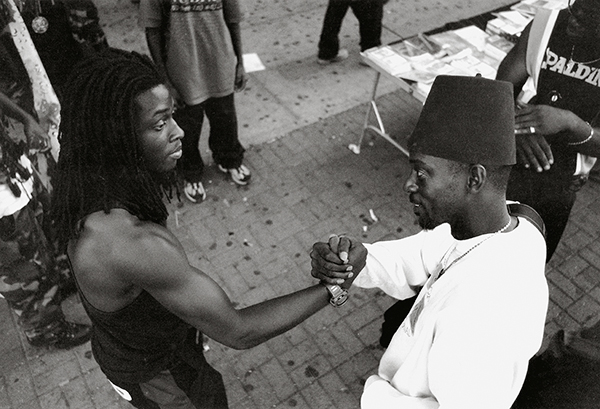
Davis: So you were clear that you were disrupting the violence. The camera was there, the thing that got them to hold still, which I think is very powerful—not just to hold still in the photographic, clinical kind of model term, but to hold still in the midst of all this chaos and connect with them human-to-human, spirit-to-spirit, brother-to-brother, to let their spirit hold still for a second because, you know, they were in this war zone. So you saw yourself as someone who was coming to interrupt the violence. Did you see a shift in them, like, when you would look at them with respect, or look at them lovingly?
Shabazz: No doubt about it, sister. I was very clear on what I needed to do to counter the escalating violence. Because one thing I learned in the military was the spirit of brotherly love. When I came home, I wanted to pass on that torch. Recognizing their greatness and their beauty produced a connection and sense of acceptance. Interestingly enough, one of the things I would pass on to both males and females who I really bonded with was the “DAP,” which was a popular handshake that we did in the Army meaning, “Dignity and Pride.” Once we had that DAP connection, a lasting bound was established.
Davis: I never knew that’s what “DAP” meant.
Shabazz: Yes, “Dignity and Pride”! That originated from brothers during the Vietnam War. We would extend our right hand in a fist and each participant would have an opportunity to be on top (showing one is not over the other), then the fists would join in the center (symbolizing equality), and finally the fists were pressed against the heart (showing love and sincerity). For many of us, it was a starting point for creating love and unity.
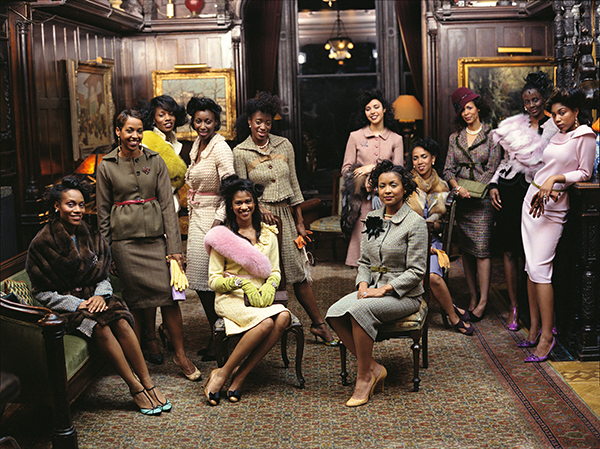
Davis: With all of that as your intention, you were able to capture—and I’m going to use this word “swag” now—this incredible sense of style. You recorded for all of us now, forever, the ingenuity, the intelligence, the genius, the diversity of black youth style, even in the midst of this war zone. You saw the style in them as a creative expression, and that could also be something that was self-esteem-building. Or at least that’s what I see. Where did style play into it?
Shabazz: With all honesty, having style back in the 1970s and ’80s was common. That was a way of life where I come from. In Brooklyn, in particular, in my community—East Flatbush, Red Hook—everyone was stylish. Looking back now, I was drawn to those people who had a particular style. The person who was unable to afford the latest fashion trends, or lacked “swag,” could feel rejected and alienated, so oftentimes I would invite them to be photographed. Back in the days, people did not have a lot, but they took what they had and made it work. Back then you had to have a crease in your pants! You may not have brand new sneakers, but you kept a toothbrush in your pocket to brush away any dirt that would alter the newness. Colors were coordinated and a fresh haircut was almost mandatory. For the women of my generation, the majority of them wore dress shoes to school, and if you had sneakers, in many cases you had them in your bag, only wearing them for gym, or track. Fashion trends are so ever present in much of my earlier photographs, but for me, my point of interest was grounded more in seeing the heart and souls of the men and women that stood before me. That was the real swag!
Davis: When you don’t come from that community, where you didn’t see style no matter what, there’s a part of it that helps to illustrate that warrior spirit. Meaning there is something that did not get destroyed in all of this. For me, it connects us to our heritage. You go to any country on the African continent, any tribe, you see an expression of God, of creativity, through the way that we present, whether it’s hair or fabrics or jewelry or dressing. I feel like what you were able to record was this inevitable, indestructible response, that we’re still able to present ourselves in this way that is exciting and interesting and full of pride. So I don’t see it as a surface thing at all. I feel it is proof of some power that we have still, this idea of these are people that nobody’s checking for, there were no street style mavens or whatever looking at them, and still they were fresher than most.
Shabazz: Yes, that is a great analysis and I agree with you one hundred per cent.

Davis: You have that as history. You have proof! It was proof of who this black youth was. They were pushing through. They were here. Were you able to show folks after you photographed them that they were in a book? Did that shift anything, for them to see themselves as you saw them?
Shabazz: The proof is in the photographs. I saw so much potential and possibility in our youth until the crack and AIDS epidemics came and life as we knew it gradually changed. Communities were losing their youth, both through incarceration and premature death. Families were falling apart and homes were being lost. My work then became an official record on how life used to be. I was fortunate to be able to document so many people at the high point of their lives; my images would also later on serve as reminders, of a different day and time; a period I refer to as “a time before crack.”
There seems to be a great appreciation for the photographs I made and they brought joy to everyone who happened to see his or her portrait. Over thirty years have now passed and I am still learning about the people I photographed. Many are not here today, but with my books, their legacy lives on. For those that have survived, the images and stories are now passed on to their children.
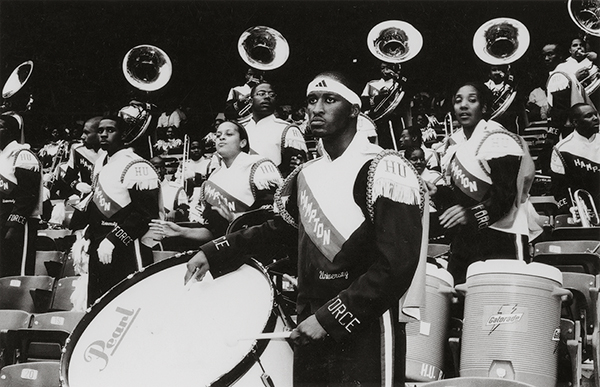
Davis: The community responded in a particular way. What about the industry? In the late ’80s and ’90s, the whole photography scene, or the art scene in photography, was very closed. It was elite. There are very few brothers who were prominent. What has that experience been like? What was that like, being a conscious black artist?
Shabazz: I was fortunate to work with a number of magazines in the late 1990s—TRACE, The Source, and Vibe. It was really TRACE magazine that recognized my work early on, and I’m very grateful to Claude Grunitzky who was the founder and editor of that great publication, for seeing value in my photographs and inviting me to share my images with his publication. It was via TRACE that my work garnered both national and international recognition, aiding in propelling my career. During that time, I only knew of a handful of African American photographers besides the great Gordon Parks and Roy DeCarava. There was Barron Claiborne and Mark Baptist, who were two of the top fashion photographers whose worked I would see often in the pages of various fashion and lifestyle publications, which I held with high regard. Later, I would go on to meet Barron, who I consider a very conscious practitioner of the craft, and it was through his guidance and personal experiences that I became aware of the politics and the ins and outs of the industry. I took in his advice and I moved forward with great zeal and self-awareness.
I remember going to The Source one day with no appointment. I met Eric Russ, an assistant photo editor for the magazine, who happened be in the elevator. He saw me with my portfolio and said, “What do you have there?” I showed him work that I was making back in the day, and he said, “Brother, this is right on time. We’re working on our 100th issue, and would like to have some of these images featured.” I was elated! About fifteen of my photographs from the 1980s were selected. When that 100th issue came out, I was told that issue sold out all over New York City. People wanted to have it, because it featured many people who were respected in the black community, not necessarily hip-hop artists, but everyday people who were known in New York City. That’s when it occurred to me that I may have something special and unique. With the success of The Source feature, I decided that it was now time to publish a book. I had previously read an article about this new publishing company in New York, PowerHouse Books, which happened to be in the area. So in the case with The Source, I went to Powerhouse with a portfolio of 1980s photographs, without an appointment. To my surprise, I was able to get an audience with the co-founder, Craig Cohen, who upon seeing my work, told me, “This is what we have been looking for. Your book can be out by next year.” He honored his word and Back in the Days was introduced to the world in September 2001.
As a conscious black artist, I now had a voice and opportunity to create what I have been blessed to do and thereby contribute to the annals of history. I revisited the work and writings of Gordon Parks to better understand how to navigate in this new and uncharted area. Gordon had many challenges, but he persevered and let his work speak for itself. I was determined to create images that represented various aspects of communities and people that are often not properly represented or included in the larger narrative. Today like never before, I feel a great sense of urgency to be out on the front lines addressing issues that we face not only as a people, but also as a global community. As a child born in the 1960s, the images that fed my mind were of brutal wars and injustice, and today, in 2016, those same problems still exist. The difference between then and now is that I was not old enough to lend my voice during the antiwar protests during the Vietnam era, nor the numerous protests demanding freedom, justice, and equality, but today I can.
Davis: A lot of the children we see now, the young adults who seem so troubled, and who everyone is so afraid of, they are the fallout of that time. What’s your vision now? And what is your hope for this nation? And what have you really seen that has changed?
Shabazz: Wow! What a powerful question right there. In terms of hope, Kendrick Lamar’s performance at the Grammys this year comes to mind. That really touched me!
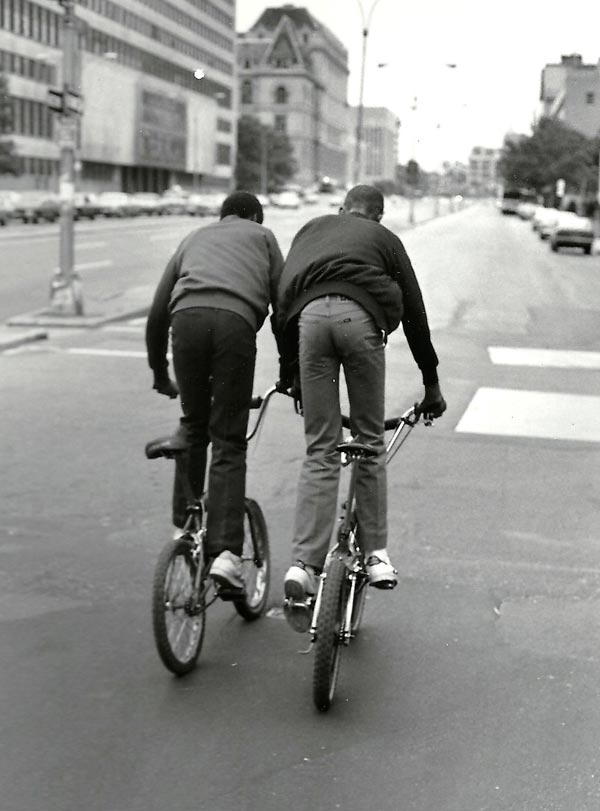
Davis: Me, too.
Shabazz: It made me feel good to know that this young brother has risen up from the ashes, making such profound statements about the state of America and its laws that have incarcerated generations of its people. I can’t help but to think about those sixteen accomplished black women from West Point who dared to raise their fists as a sign of solidarity and celebration, only to be mocked and persecuted for having confidence and pride. It’s a change. It’s something I needed to see.
There so much work that needs to be done to reverse many of the problems we are faced with today. The topic of mass incarceration is serious; the overall criminal justice system has to be revamped. More often than not, I am reminded of the countless imprisoned men of color who are being exonerated due to the utilization of DNA samples. So many have spent decades locked up and thousands still languish behind bars due to disparities and covert racism. Witnessing the crack epidemic and the unfair laws that contributed to the dismantling of communities and mass incarceration, far too many people just needed rehabilitation versus incarceration. Sadly, the damage has already been done and lives and families have forever been changed. I really can’t predict what the future will hold, as right now the world is in turmoil and much will be determined by who the next president of this country will be. I do know one thing: they have a great task ahead of them.
Davis: You did this work before Instagram, before Facebook, before the age of social media, when now we’re able to exchange images across the globe in a matter of seconds. But for all the people who are recording these times, you represent that they are connected to a legacy of people caring about recording our lives. But that this is an integral part of the legacy. And particularly the crack epidemic—very few people have talked about it in pictures, whether moving pictures or not. What literally happened. Because people look at a lot of black youth now as if, “What is wrong with them?” And it’s not what’s wrong with them. It’s like, “What happened to them?” Your images create the conversation of “What happened to them?” That is a burden. The fact that you’re not just like Vice and droppin’ down, and taking pictures of cool black people. You have touched them and talked to them and know them, and now that you know what happened to them, that’s a whole other layer to this movement. It’s really important that you’re here.
Shabazz: Well, I thank you so much for that and it’s very important that you’re here, as well as so many other visionaries who lend their voices. I personally stand on the shoulders of the many who have sacrificed so much, and that is how I can even be having this exchange with you.
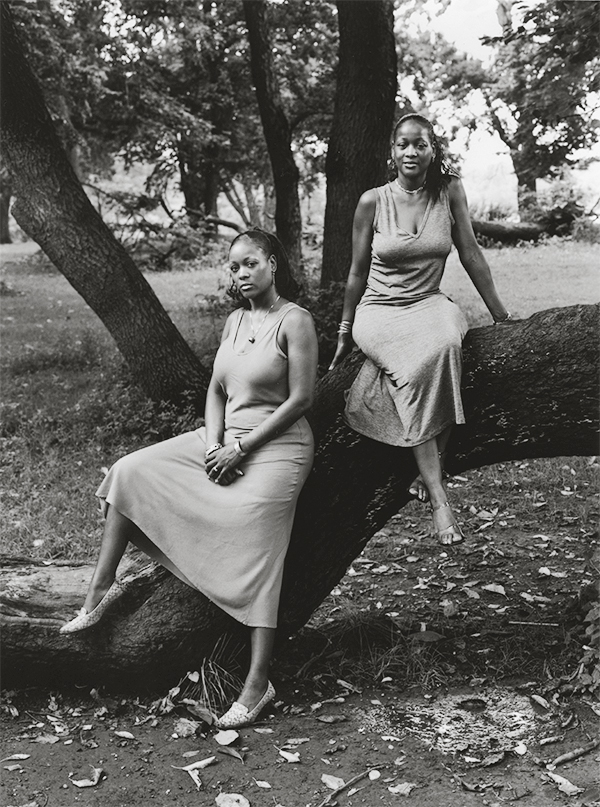
Davis: We are our stories. That’s what proves that a people were here. If someone young happened to get “Vision & Justice,” this very lovely magazine, a young black person, what would you want to say to them directly?
Shabazz: I would say that we have a very important history, it must never be forgotten, and at the same time, all of us individually have the ability to be creative and proactive in some form or fashion. Let us search inside ourselves and see what we can do to contribute to the preservation of our history and culture. We can start with our own families. It is vital that we take time to have conversations with the elders within our immediate families and communities, because they hold the keys to a very important history.
A wise man once said, “You can’t know where you’re going, until you know where you’ve been.” I wasn’t aware of the importance of exchanging thoughts with my aunts and uncles back in the ’60s and the ’70s. They’re gone now and so much went with them, but this generation, born in the age of Facebook and other forms of social media, have an abundance of tools readily available to not only record history, but also to inspire and enlighten others on a global stage. With the world being in such disarray, we need all hands on deck.
Davis: That is perfect advice. I needed to hear that. Thank you so much. You’re so inspiring. I’m glad I’m living in a time with you in it.
Shabazz: That means a lot because you’ve been an inspiration to me over many, many years and I look back at your work when I first was introduced to it in Essence and Vibe. You were a master stylist and that helped me be the man I am today. You also helped me to appreciate womanhood. As I said to you in an earlier conversation, seeing you on TV and raising your voice, you have made great contributions that inspired me over the years! So I salute you for what you’ve done and what you will continue to do, because I see you as a serious torch bearer, both now and for the future generations.
Davis: Well, we’re out here together.
Read more from “Vision & Justice” or subscribe to Aperture and never miss an issue.










